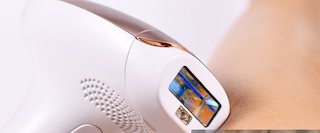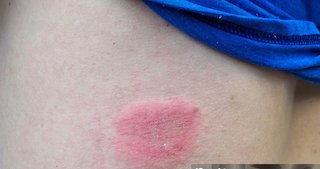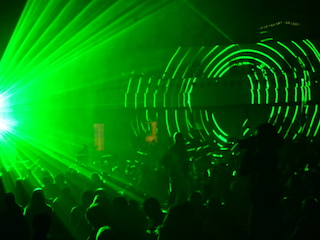How Pulsed Light Works For Cosmetics

How Pulsed Light Works For Cosmetics
Pulsed light therapy has gained significant attention in recent years for its ability to enhance various cosmetic treatments. Understanding how pulsed light works is essential for making an informed decision. In this comprehensive article, we will delve into the science behind pulsed light, its various applications, benefits, and safety considerations in cosmetic treatments.
Pulsed light
Pulsed light, also known as intense pulsed light, refers to a technology that uses high-intensity light pulses for therapeutic or cosmetic purposes. Unlike lasers, which emit a single wavelength of light, IPL devices produce a broad spectrum of light that can be filtered to target specific skin concerns. This broad-spectrum light is delivered in short, controlled bursts or pulses, which is where the term pulsed light comes from.
The light energy from IPL penetrates the skin, where it interacts with various chromophores such as melanin, haemoglobin, and water. The energy is absorbed by these chromophores, which causes them to heat up and break down unwanted tissue or stimulate specific biological processes.
How does pulsed light work?
Pulsed light works based on the principles of selective photothermolysis, which refers to the process of using light to selectively target and treat specific structures in the skin. When the light pulses are delivered to the skin, they are absorbed by the chromophores present in the skin. The absorbed light energy is then converted into heat, which can destroy or damage the targeted tissue. This selective absorption minimizes the impact on surrounding skin structures.
There are several key factors that determine the effectiveness of pulsed light therapy:
1) Wavelength of light: The wavelength of light determines the depth at which the light can penetrate the skin. Different wavelengths are used to target different skin concerns. For example, shorter wavelengths are better for treating superficial pigmentation issues, while longer wavelengths can penetrate deeper into the skin to address vascular concerns or stimulate collagen production.
2) Pulse duration: The length of time the light pulse is emitted is also crucial. Shorter pulse durations can be used for superficial issues, while longer pulses may be required to treat deeper layers of the skin or more extensive conditions.
3) Fluence: Fluence refers to the amount of energy delivered per unit area. Higher fluence settings are typically used for more severe skin conditions, while lower fluence may be sufficient for more delicate treatments.
4) Cooling mechanism: Many IPL devices incorporate cooling systems to protect the skin from excessive heat and minimise discomfort during treatment. Cooling mechanisms can include contact cooling, air cooling, or cooling gels.
Common cosmetic applications of pulsed light
Pulsed light technology has a wide range of cosmetic applications, thanks to its versatility in treating various skin concerns. Here are some of the most popular uses of pulsed light in cosmetic treatments:
1) Skin rejuvenation and anti-aging
The most common use of pulsed light is for skin rejuvenation. As we age, our skin loses collagen and elastin, leading to wrinkles, fine lines, and a loss of skin elasticity. IPL treatments stimulate collagen production by heating the deeper layers of the skin, encouraging the body to produce new, healthy skin cells.
In addition to collagen stimulation, IPL can also improve skin tone and texture by reducing the appearance of sunspots, age spots, and other forms of hyperpigmentation. The energy from pulsed light can break down excess melanin in the skin, leading to a more even complexion. Additionally, IPL can help with skin tightening by stimulating the underlying dermal structure.
2) Hair removal
Pulsed light is widely used for permanent hair removal. The principle behind this application is the selective absorption of light by the pigment in the hair follicle. When the light is absorbed by the hair, it is converted into heat, which damages the follicle and inhibits future hair growth.
Unlike traditional laser hair removal, which uses a single wavelength of light, IPL devices use a range of wavelengths to target various types of hair and skin tones. This makes IPL a more versatile option for individuals with different skin and hair types. However, it’s worth noting that IPL may be less effective on very light or gray hair compared to darker hair types, as there is less melanin for the light to target.
3) Acne treatment
Pulsed light is also used to treat acne by targeting the bacteria responsible for causing breakouts. Acne-causing bacteria, specifically Propionibacterium acnes, thrive in the sebaceous glands of the skin. When pulsed light is absorbed by the skin, it generates heat that helps to destroy the bacteria. Additionally, the heat can reduce inflammation and promote the healing of acne lesions.
IPL can also help to regulate sebum production in the skin, which is the primary contributor to acne development. By reducing excess oil and bacteria, IPL treatments can help keep the skin clearer and prevent future breakouts.
4) Pigmentation and vascular concerns
IPL is highly effective in treating a range of pigmentation issues, including age spots, sunspots, freckles, and melasma. The light energy is absorbed by the excess melanin in the skin, which is then broken down and eliminated by the body’s natural processes.
In addition to pigmentation, IPL is also used to address vascular concerns such as broken capillaries, spider veins, and rosacea. The light pulses target the hemoglobin in the blood vessels, causing them to collapse and fade over time. This can significantly reduce the appearance of redness and visible veins in the skin.
5) Stretch marks
While more commonly used for pigmentation and hair removal, IPL has also shown promise in reducing the appearance of stretch marks. Stretch marks are a form of scarring that occurs when the skin is stretched too quickly, causing the collagen and elastin fibers to break. IPL stimulates the production of new collagen and elastin, which can help to improve the texture and appearance of stretch marks.
Benefits of pulsed light for cosmetic purposes
Pulsed light therapy offers a range of benefits, making it an attractive option for those seeking non-invasive cosmetic treatments. Some of the key benefits include:
1) Non-invasive treatment: IPL is a non-invasive procedure, meaning it does not require incisions or surgery. There is little to no downtime, and most patients can resume their normal activities immediately after treatment.
2) Minimal discomfort: While the treatment may cause some discomfort, many patients describe the sensation as similar to the snap of a rubber band against the skin. Cooling devices used in conjunction with IPL further reduce discomfort.
3) Versatility: Pulsed light is versatile and can treat a wide range of skin concerns, from pigmentation issues to hair removal, acne, and even skin rejuvenation. It can be tailored to suit different skin types and concerns.
4) No need for anaesthesia: Unlike more invasive procedures, IPL treatments do not require local anaesthesia or sedation. This makes the procedure quick and convenient for patients with busy schedules.
5) Gradual and natural-looking results: The advantage of IPL is that the results tend to develop gradually, providing a more natural-looking outcome. Over time, skin appears smoother, brighter, and more even-toned.
Safety considerations and side effects
While IPL is generally considered safe, there are some risks and side effects to be aware of. These may include:
1) Skin irritation: Some redness or swelling may occur immediately after the treatment, similar to a mild sunburn. This typically subsides within a few hours to a few days.
2) Hyperpigmentation or hypopigmentation: In rare cases, IPL can cause changes in skin pigmentation. Individuals with darker skin tones are at a higher risk of developing hyperpigmentation or hypopigmentation after treatment.
3) Burns or blisters: If the device is not calibrated correctly or if the skin is overexposed to the light, there is a risk of burns or blisters. This highlights the importance of seeking treatment from a qualified and experienced professional.
4) Eye protection: The bright light emitted by IPL devices can be harmful to the eyes. Patients are typically provided with protective eyewear during treatment to minimise the risk of eye injury.
Conclusion
Pulsed light therapy is a powerful and versatile tool in the world of cosmetic treatments. From skin rejuvenation and acne treatment to hair removal and pigmentation correction, IPL offers a wide range of benefits for those seeking non-invasive solutions. By understanding how pulsed light works and the various factors that affect its effectiveness, you can make a more informed decision about whether this technology is right for your cosmetic needs.
As with any cosmetic procedure, consult with a qualified dermatologist or licensed practitioner before undergoing IPL treatments. A professional will be able to assess your skin type, discuss potential risks, and recommend a treatment plan that aligns with your goals. When used correctly, pulsed light can help you achieve smoother, clearer, and more youthful-looking skin with minimal downtime and discomfort.



